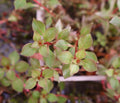Understanding Nitrogen Cycle for Fish Keepers
One of the most important concepts for any fishkeepers or aquascapers to learn is the nitrogen cycle, yet it is frequently ignored by many. This leads to what we call "New Tank Syndrome" wherein fish that die straight away.
The nitrogen cycle is a huge and intricate subject. But in this blog, we will simply cover the most fundamental aspect of the nitrogen cycle in this post, which every aquarium owner has to be aware of.
What happens during the nitrogen cycling process in an aquarium?
The nitrogen cycle describes as the transition from ammonia to nitrite to nitrate to nitrogen gas. Nitrate is transformed into nitrogen gas by the denitrifying bacteria, both in natural systems and some aquarium systems.
Overfeeding and overcrowding occur frequently in an aquarium setting because of the size of the tank. Nitrogen pollution, which can afflict or even kill your aquarium fish, thrives in these completely sealed setting. These are the fundamental elements and mechanisms that make up the nitrogen cycle.
Thousands of "nitrifying" bacteria live and develop in the biological medium of the aquarium filter, where they contribute to the nitrogen cycle. It takes these bacteria around eight weeks to multiply and flourish in the filter in sufficient numbers to contribute to the nitrogen cycle.
Fish keepers frequently see their fishes die brought on by the accumulation of the invisible harmful chemicals, or "New Tank Syndrome," during these first few weeks when there aren't many microorganisms.
The nitrogen cycle in aquariums is also known as "biological cycle", "nitrification process", and even the "start-up cycle."
The cycle is an important step in the development of beneficial bacteria in the aquarium and on the filter media, which will then help in the conversion of ammonia to nitrite and then nitrite to nitrates.
Ideally, your aquarium tank water should contain 0 ppm ammonia, 0 ppm nitrites, and generally some nitrates if you have multi-test strips and ammonia test strips.
You must drain a portion of the dirty tank water and replace it with new, clean water if the nitrate concentration reaches 40 ppm or higher.
The biofilter is used to remove ammonia from an aquarium system. The biofilter gives nitrifying bacteria a surface to thrive on. The nitrite that these nitrifying bacteria create after consuming ammonia is harmful to fish. In the biofilter, more nitrifying bacteria break down nitrite to make nitrate.
Three Important Things in Nitrogen Cycle
Ammonia
Ammonia in a fish tank that is cycling is typical, as was previously explained. For at least 1–3 weeks, the ammonia will most likely be visible on the test kit. Nitrites and nitrates should then start to emerge.
Nitrite
The nitrogen cycle should be avoided since nitrates are the most frequent killers of aquarium fish. Ammonium ions undergo partial oxidation in the aquarium, which produces nitrates. The nitrite is subsequently mainly harmlessly transformed into nitrate by nitrite-loving bacteria.
Nitrate
Nitrate is transformed into nitrogen gas in natural systems and some aquarium systems by denitrifying microorganisms. The nitrogen cycle is the process that turns ammonia into nitrite, nitrate, and then nitrogen gas.
Calculating Nitrate
Although many aquarists operate their tanks with extremely high nitrate levels, a range of 5 to 10 ppm is optimum. 20 to 50 ppm is considered to be too high. Reef tanks should be as close to zero as feasible, marine fish-only setups should be towards the lower end, and freshwater tanks can be in the middle.
Why is your aquarium important to the nitrogen cycle?
Before adding fish to a tank, it must first go through the cycle process because, otherwise, contaminants would build up to dangerous levels and the fish or shrimps may get killed. Water and a filter are the basic requirements for an aquarium's cycle.
As fish excrement, decomposed materials, etc. are added to the tank, highly-hazardous ammonia is released. It will remain in the aquarium with your fish and kill them. Even if you can get rid of this ammonia by changing the water, you won't have enough time to act before it kills your fish because it will have already been there for a very short period of time.
This is where the nitrogen cycle comes into play.One of the most crucial processes that will keep your fish alive is the breakdown of extremely hazardous ammonia (NH4+) into the less deadly nitrate (NO3).
What occurs if a tank isn't recycled?
If you don't cycle your aquarium before introducing fish, the filter media won't have the essential concentrations of helpful, nitrogen-fixing bacteria to convert ammonia and nitrites into nitrates. As a result, when your fish start producing waste, there will be nothing to filter the water of ammonia.
Ammonia will eventually build up in your fish tank if you don't cycle it. Your fish will become sick and eventually perish since ammonia is poisonous to fish.
Typically, the cycle process takes two to six weeks. The tank is fully cycled and prepared to be stocked with the aquarium pets you wish to keep when the nitrate levels increase and the nitrite levels drop to 0 mg/L.
















